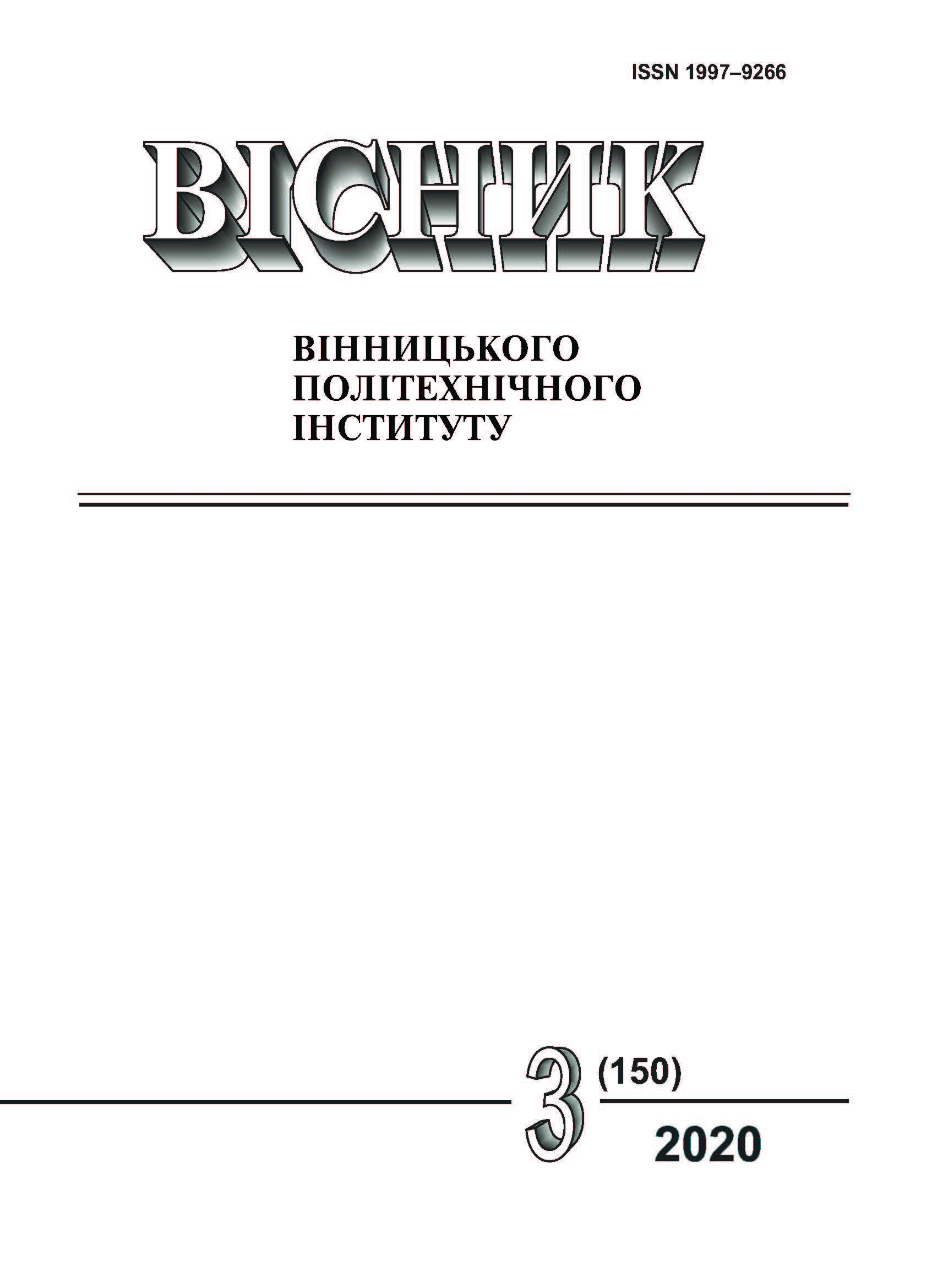Justification of Reasonability of Equalization Basins Implementation for the Technology of Municipal Wastewater Treatment
DOI:
https://doi.org/10.31649/1997-9266-2020-150-3-13-21Keywords:
household wastewaters, equalization basin, aeration tank, sedimentation pond, biochemical oxygen demandAbstract
The inflows of municipal sewages discharged to wastewater treatment plants for full biological treatment can vary widely throughout the day. Therefore, one of the ways of optimizing the operation of wastewater treatment plants is the use of regulating tanks – equalization basins, providing the possibility of uniform supply of wastewater with averaged concentration. The purpose of the paper is to substantiate the feasibility of using equalization basins in the technological cycle of complete biological treatment of household wastewaters. According to the analysis of technological data of the Livoberezhnna Aeration Station (LAS) located in Dnipro City the sewage inflow rates at treatment plant have significant daily variations. In this regard, there is a need to implement a separate technological operation to equalize the water inflow before the primary sedimentation tanks and aeration tanks in order to normalize the flow and average concentration of pollutants. On the basis of the initial data of qualitative and quantitative indicators of water samples chemical analysis the load of biochemical oxygen demand (BOD) at the treatment plant was calculated. The volume of the equalization basin is determined according to the methodology widely used in American universities and engineering companies in the USA. The results of calculations of wastewater averaging according to BOD indicate the effect of equalization of pollutant concentrations during the day. Thus, the ratios of BOD load values for wastewater treatment without equalization and with equalization basins are: maximum to minimum — 25,82 and 2,05; minimum to average — 0,08 and 0,62; maximum to average — 2,06 and 1,27 respectively. It is established that the average wastewater outflow in the volume of 0,307 m3/s allows avoid overloading by BOD concentrations, in contrast to the actual inflow, the volume of which can fluctuate during the day.
References
М. Д. Волошин, О. Л. Щербак, Я. М. Черненко, і І. М. Корнієнко, Удосконалення технології біологічної очистки стічних вод. Дніпродзержинськ, Україна: Дніпродзержинський держ. техн. ун-т, 2009.
М. Ю. Козар, і Л. А. Саблій, «Ефективна технологія очищення стічних вод солодового заводу,» Вісник інженерної академії України, № 3–4, с. 209-212, 2013.
І. М. Таварткіладзе, О. В. Замогильна, і О. А. Коваль, «Попередня очистка стічних вод від виробництва плит МДФ,» [Електронний ресурс]. Проблеми водопостачання, водовідведення та гідравліки, № 18, с. 49-59, 2012. Режим доступу: http://nbuv.gov.ua/UJRN/PVVG_2012_18_7 .
З. С. Одноріг, О. Р. Василюк, О. І. Рубай, і Д. О. Березюк, «Модернізація технологічної лінії очищення стічних вод птахофабрики,» Науковий вісник НЛТУ України, № 29 (3), с. 96-98, 2019.
M-N. Pons, and J.-P. Corriou, “Implementation of an Equalisation Tank on the Cost 624 Wastewater Treatment Plant Benchmark,” IFAC Proceedings Volumes, no. 34(5), pp. 433-437, 2001. https://doi.org/10.1016/S1474-6670(17)34258-1 .
B. N. Uba, and J. A. Ekundayo, “Nutrient status of wastewater in a fertilizer-factory-waste discharge equalization basin,” Bioresource Technology, № 51 (2–3), pp. 135-142, 1995. https://doi.org/10.1016/0960-8524(94)00106-B .
Y. P. Khare, G. M. Naja, R. Paudel, and C. J. Martinez, “A watershed scale assessment of phosphorus remediation strategies for achieving water quality restoration targets in the western Everglades,” Ecological Engineering, № 143, 105663, 2020. https://doi.org/10.1016/j.ecoleng.2019.105663 .
C.-T. Chang, and B.-H. Li, “Optimal design of wastewater equalization systems in batch processes,” Computers & Chemical Engineering, no. 30 (5), pp. 797-806, 2006. https://doi.org/10.1016/j.compchemeng.2005.12.003 .
I. Queinnec, J. Harmand, and S. Tarbouriech, “Analysis and Control of a Wastewater Equalization System,” IFAC Proceedings Volumes, no. 37 (3), pp. 493-498, 2004. https://doi.org/10.1016/S1474-6670(17)32630-7 .
R. Muoio, et al., “Optimization of a large industrial wastewater treatment plant using a modeling approach: A case study,” Journal of Environmental Management, no. 249, 109436, 2019. https://doi.org/10.1016/j.jenvman.2019.109436 .
W.-H. Chen, S.-J. Lin, F.-C. Lee, M.-H. Chen, T. Y. Yeh, and C. M. Kao, “Comparing volatile organic compound emissions during equalization in wastewater treatment between the flux-chamber and mass-transfer methods,” Process Safety and Environmental Protection, no. 109, pp. 410-419, 2017. https://doi.org/10.1016/j.psep.2017.04.023 .
ДБН В.2.5-75:2013. Каналізація. Зовнішні мережі та споруди. Основні положення проектування. Видання офіційне. Київ: Міністерство регіонального розвитку, будівництва та житлово-комунального господарства України, 2013, 96 с.
С. В. Яковлев, Ред., Очистка производственных сточных вод. Москва: Стройиздат, 1985, 335 с.
G. Tchobanoglous, F. L. Burton, and H. D. Stensel, Wastewater Engineering: Treatment and Reuse, 4th Ed. Metcalf & Eddy. Inc., McGraw-Hill Education, 2003.
D. Kulikova, O. Kovrov, Y. Buchavy, and V. Fedotov, “GIS-based Assessment of the Assimilative Capacity of Rivers in Dnipropetrovsk Region,” Journal of Geology, Geography and Geoecology, no. 27 (2), pp. 274-285, 2018. https://doi.org/https://doi.org/10.15421/111851 .
V. Kolesnyk, D. Kulіkova, and S. Kovrov, “In-stream settling tank for effective mine water clarification,” in Annual Scientific-Technical Collection “Mining of Mineral Deposits”. CRC Press / Balkema, Netherlands; Taylor & Fransis Group, London, UK. pp. 285-289, 2013.
Downloads
-
PDF (Українська)
Downloads: 519
Published
How to Cite
Issue
Section
License
Authors who publish with this journal agree to the following terms:
- Authors retain copyright and grant the journal right of first publication.
- Authors are able to enter into separate, additional contractual arrangements for the non-exclusive distribution of the journal's published version of the work (e.g., post it to an institutional repository or publish it in a book), with an acknowledgment of its initial publication in this journal.
- Authors are permitted and encouraged to post their work online (e.g., in institutional repositories or on their website) prior to and during the submission process, as it can lead to productive exchanges, as well as earlier and greater citation of published work (See The Effect of Open Access).





